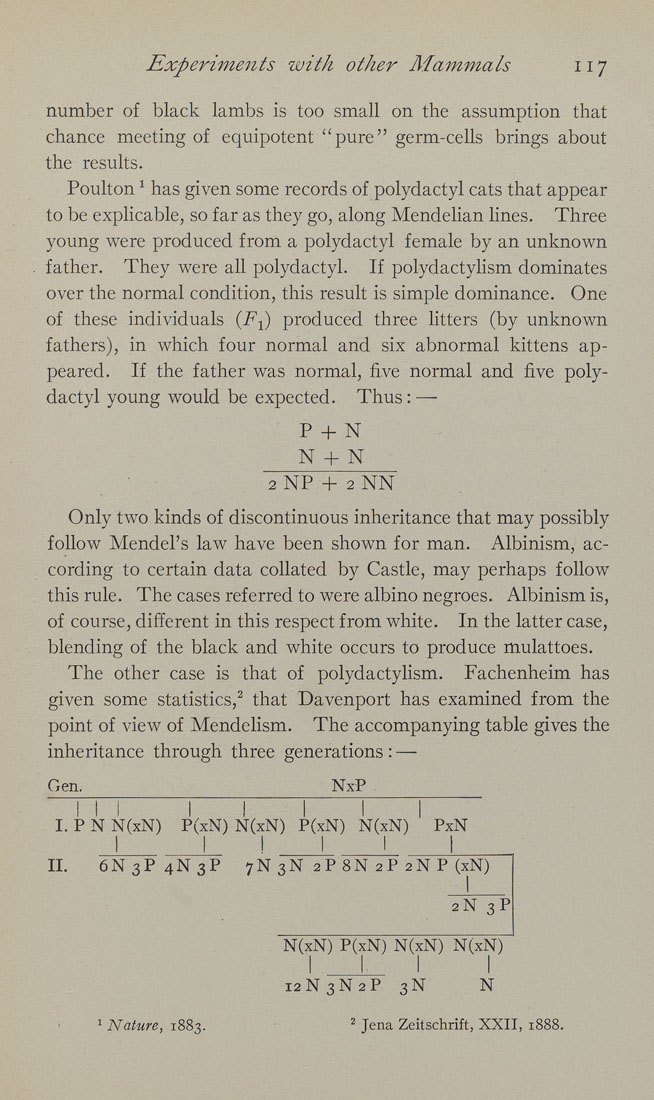Experiments with other Mammals 117
number of black lambs is too small on the assumption that
chance meeting of equipotent "pure" germ-cells brings about
the results.
Poulton ^ has given some records of polydactyl cats that appear
to be explicable, so far as they go, along Mendelian lines. Three
young were produced from a polydactyl female by an unknown
father. They were all polydactyl. If polydactylism dominates
over the normal condition, this result is simple dominance. One
of these individuals {F-^ produced three litters (by unknown
fathers), in which four normal and six abnormal kittens ap¬
peared. If the father was normal, five normal and five poly¬
dactyl young would be expected. Thus: —
P + N
N + N
2 NP 4- 2 NN
Only two kinds of discontinuous inheritance that may possibly
follow Mendel's law have been shown for man. Albinism, ac¬
cording to certain data collated by Castle, may perhaps follow
this rule. The cases referred to were albino negroes. Albinism is,
of course, different in this respect from white. In the latter case,
blending of the black and white occurs to produce mulattoes.
The other case is that of polydactylism. Fachenheim has
given some statistics,^ that Davenport has examined from the
point of view of Mendelism. The accompanying table gives the
inheritance through three generations: —
Gen.___________________________NxP____________
I. P N N(xN) P(xN) N(xN) P(xN) N(xN) PxN
II. 6N3P4N3P 7N3N 2P8N 2P 2NP (xN)
2N 3P
N(xN) P(xN) N(xN) N(xN)
12N3N2P 3N N
1 Nature, 1883. ^ Jena Zeitschrift, XXII, iJ
|








